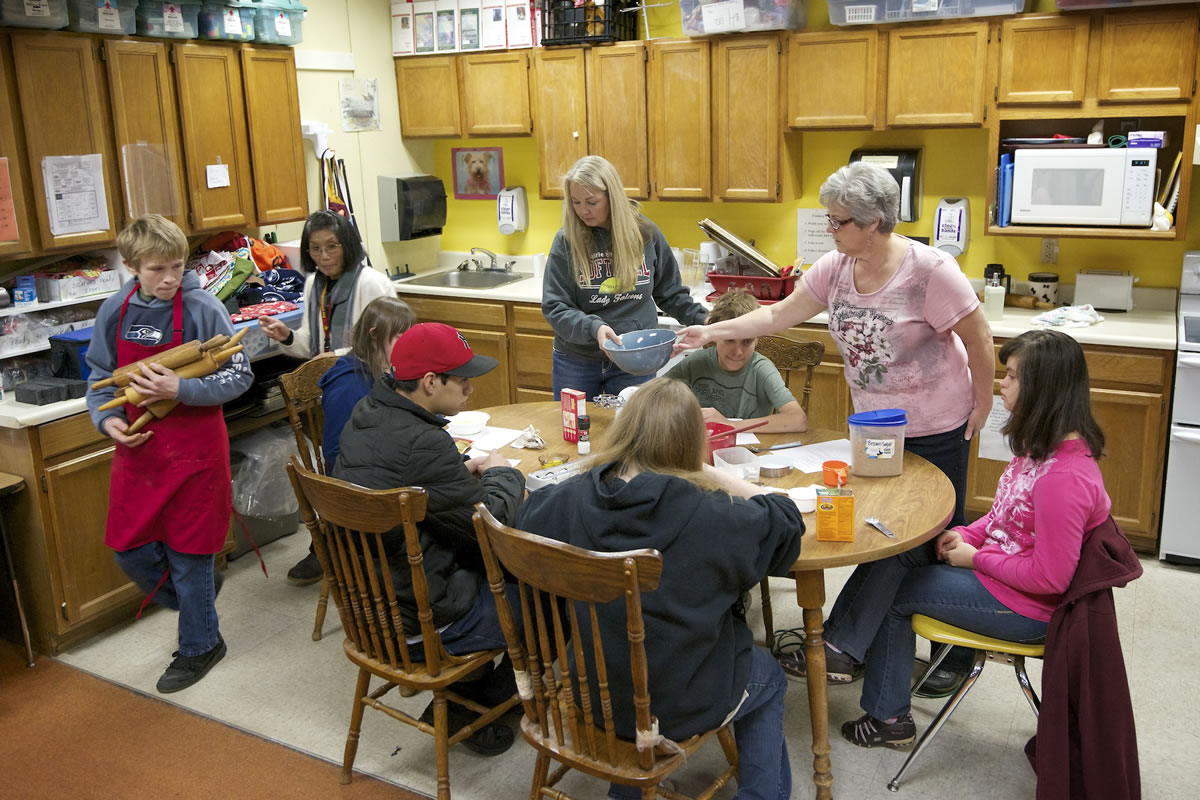Through 8:59 p.m. Dec. 19, people can vote daily both online and via text for Prairie High School’s life skills kitchen. The program that receives the most votes overall will be awarded the $50,000 grand-prize grant, and the next top vote-getters in three categories will be awarded a $25,000 grant.
o Vote via text: (message and data rates may apply)
Text 776pbf to 95248.
Vote once a day.
o Vote online:
Power a Bright Future, Clorox grants for school programs.
Prairie High School’s three life skills classrooms share an inadequate kitchen, so the staff entered their program in an online contest, the Clorox Company’s Power a Bright Future grant program.
The $50,000 grand prize would build a functional kitchen large enough for the students and with access to all three classrooms without disrupting another class.
Through 8:59 p.m. Dec. 19, people can vote daily both online and via text for Prairie High School's life skills kitchen. The program that receives the most votes overall will be awarded the $50,000 grand-prize grant, and the next top vote-getters in three categories will be awarded a $25,000 grant.
o Vote via text: (message and data rates may apply)
Text 776pbf to 95248.
Vote once a day.
o Vote online:
Power a Bright Future, Clorox grants for school programs.
Justin Hansen, 17, a junior in Annie Lamberto’s life skills class at Prairie, on Tuesday collected rolling pins from the life skills kitchen two rooms away, squeezed between the kitchen table and another class of students and brought the rolling pins back to his own classroom.
There he and his classmates rolled out dough, cut out dog biscuits with bone-shaped cookie cutters and arranged them on trays. Later, when the oven in the other classroom was available, the biscuits were taken back to the life skills kitchen and baked. Lamberto’s classroom doesn’t have a counter top, a stove or even a sink for the students to wash their hands. That’s all done next door.
When the life skills kitchen was built, Prairie had only one class of students with special needs, so the compact kitchen was built inside the classroom. Now, there are three classrooms for students with special needs, and all three classrooms — with a total of 32 students — are jostling and rubbing elbows in the tiny kitchen workspace. Two of the classrooms can use the kitchen for only 30 minutes a day.
Each life skills classroom operates its own business, to help students learn about business and vocational skills. The students in Lamberto’s class make, package and sell peanut butter dog biscuits, called Prairie Biscuits. The biscuits are sold at local stores and minimarts. This particular batch will be sold at the Prairie High School Yuletide Bazaar on Saturday. Another classroom makes dog scarves; the third classroom makes greeting cards.
Lamees Shahtout’s life skills class was making chocolate chip cookies in the kitchen. Gathered around a communal table, Ganna Grebenyuk, 17, measured brown sugar while Abby Jones, also 17, unwrapped two cubes of butter and plopped them into a mixing bowl. Each student has a task. But the class would work better if the students had a kitchen counter to stand around to learn cooking skills.
“All students in the program have mild to moderate disabilities,” said Lamberto, who said the students spend the majority of their school day in their living skills classroom.
“We look at creating as much independence, social skills, work skills and independent living skills,” Lamberto says.
Back in Lamberto’s classroom, Abby Von Kaenel, 16, concentrated as she rolled out dog biscuit dough.
“They smell great,” one student observed.
“Extra peanut butter!” Abby said, wielding her rolling pin and grinning.




